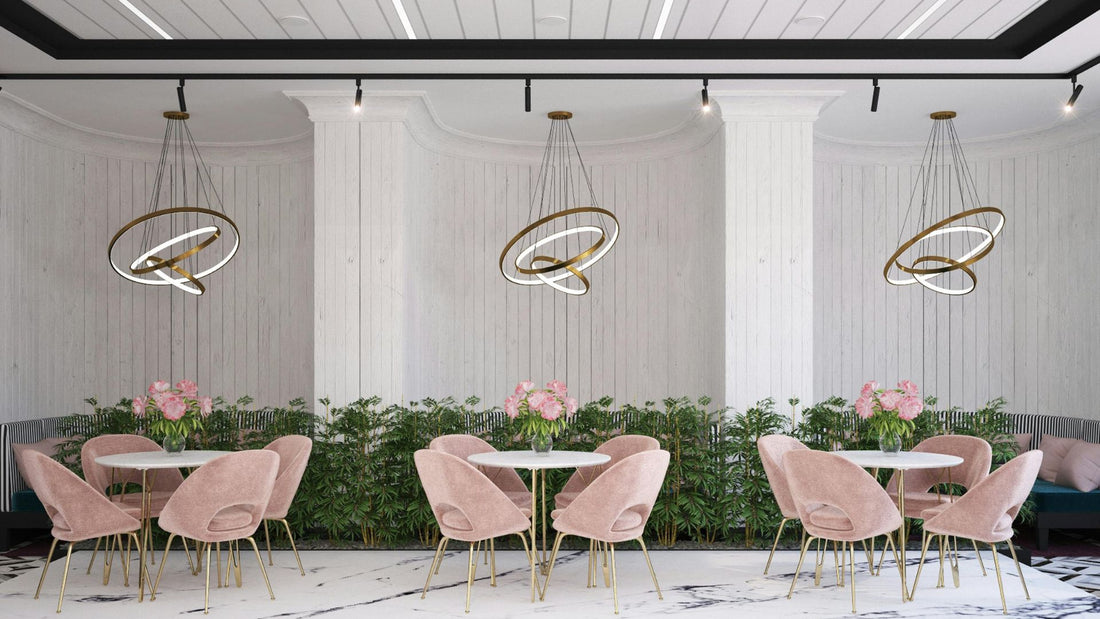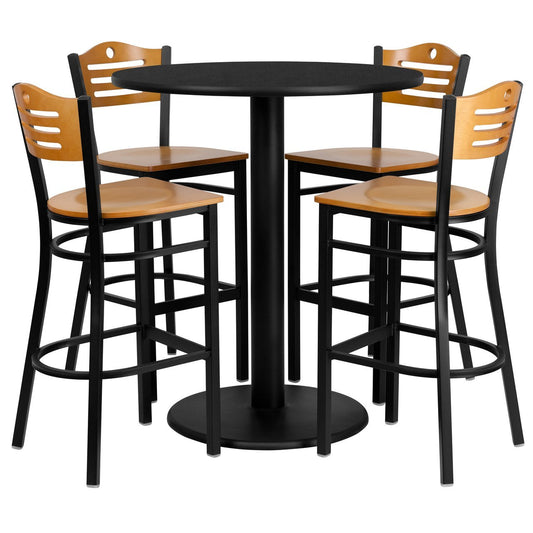
Key Considerations When Selecting Cafeteria Furniture
Share

Selecting the type of furniture determines the overall environment that will be provided in the cafeteria. Whether it is for a school canteen, employee lunch room, or a community hall, the options that are available or chosen concerning furniture have an impact on everything ranging from comfort to space utilization. In this blog post, let’s take a look at the main factors that you should pay attention to when selecting cafeteria chair and table to make them stylish as well as highly efficient.
Top 10 Key Considerations When Selecting Cafeteria Furniture
Before buying any furniture for your restaurant and cafe, you should consider a few things. Choosing the wrong item can be costly and troublesome. So, you should follow the below mentioned 10 main considerations while choosing cafeteria furniture:-
1. Assessing Your Space
While considering your options for furniture, it is the right time to measure your space. Determine the length, width, and height or size of the cafeteria space that is to be furnished and decorated. Consider the layout and flow of the place: Should a specific area be set aside free of obstruction for the flow of traffic? Will it be necessary to create zones, for example, zones for quiet dining or group interaction?
Space Planning Tips:
- To prepare the scale layout of the cafeteria, one should draw plans with the help of graph paper or use computer-assisted design.
- Consider the need for aisles and open spaces from chairs to tables and from one table to another in the dining area.
- Consider the space that sets up a facility such as a service center or trash bins.
2. Choosing the Right Tables
Cafeteria tables vary in regards to their shape, their dimensions, and their material, depending on their function and the surrounding interior design. Here's what to consider when choosing a cafeteria table:
Size and Shape:
- Rectangular Tables: Best suited for ordering tables or spaces used to increase the number of seats along an aisle or passage.
- Round Tables: Create a more social atmosphere and are especially good for groups of people.
- Square Tables: Combinable and can be used together in any possible way to create a diverse range of cafe and restaurant seating plans.
Material:
- Laminate: It is long-lasting and stain-repellent, so it finds a lot of use in areas such as hallways or staircases.
- Wood: Offers a very traditional and attractive aesthetic to the exterior, but may require more varied levels of care depending on the type.
- Metal: Very resistant and can go with most chairs of contemporary styles.
Table base:
- Pedestal base: Make sure it will offer a neat look and at the same time, it has enough space for the legs.
- Four-legged bases: are stable and are suitable to use for taverns or extra large tables.
3. Selecting Comfortable and Durable Chairs
Chairs are among the most important parts of cafeteria furniture since they define the level of comfort of your clients. Here are some factors to consider:
Ergonomics:
- Seat Height: The chair height should be in proportion to the table height so that people can comfortably sit when they dine.
- Backrest: These design features are crucial because a supportive backrest assists in keeping the right posture making comfort for lengthy periods achievable.
Material:
- Plastic Chairs: Inexpensive to purchase, easy to wash, and do not stain easily.
- Upholstered Chairs: They offer additional comfort to the patients and might need some additional precautions.
- Metal or Wood Chairs: Long-wearing and many times are available in different designs that can fit different themes of a given place.
Design and Style:
- Select a furniture style that matches the general theme that is employed in the design of the cafeteria. No matter if the setting you would like to create is ultra-futuristic, Cold-War-era technopolis, or vintage retro, make sure the chairs add to the atmosphere.
4. Consider the Maintenance and Cleaning
Cafeteria table and chair should be constructed in a way that should allow it to be easily maintained given the fact that it will be in constant use. In choosing the material for cafeteria materials, think about the ability to clean and the durability in the long run.
Cleaning Tips:
- Choose products that cannot get stained or that can directly be cleaned using a wipe or cloth.
- In the case of upholstered chairs, they should be able to resist spillage and be easy to wash or clean.
- Also, tables and chairs should not have small features such as armrests and curves with narrow gaps that are difficult to clean.
5. Budget and cost considerations
Set a limit financially about the quality and durability of the furniture regarding your financial limits. The type of furniture, budget, comfortability, durability, aesthetic value, and ergonomics of furniture plays a major role, whereby the amount of money one has affects the type of furniture to be purchased. However, well-chosen appliances are more effective and reduce costs significantly, as well as create less value in the long run.
Cost-Saving Tips:
- Look for discounts for large quantities of the item, or if it can be purchased in bulk.
- It is wiser to spend more on better materials to avoid frequent replacements – in the long run, it is cheaper.
- Analyze from one supplier to another to get the best value from the amount invested.
6. Durability and Longevity
Cafeteria furniture must satisfy requirements such as the capability to deal with a high level of utilization as well as possible abuse. Purchasing Durable furniture helps to save costs in the future and at the same time have furniture that is more efficient and will suffice the purpose of that place.
Factors Affecting Durability:
- Construction: Make sure that the style of the construction in both tables and chair cafeteria is correct. A sustained frame and good joints are all signs of furniture that will last a long time.
- Finish: Durable finish finishes can prevent scratching, staining, or damaging the furniture easily.
- Warranty: A good warranty will one way help give a consumer confidence as well as safeguard him/her from any manufacturing deformities.
7. Aesthetic Appeal
Not only should the design of your cafeteria furniture be well-designed, but it should also blend well with the rest of the cafeteria. Regarding furniture, go for the aesthetic that removes the focus from the aesthetics but fits the interior and makes people comfortable.
Design Tips:
There should be a strong correlation with the existing decor elements in terms of colors and materials used on the furniture.
- If the cafeteria belongs to a corporate or an educational institution, one may want to introduce more you can use some more branded items.
- Employ the use of furniture to divide areas in the cafeteria; casual dining areas or even proper dining or a dining table.
8. Accessibility and Inclusivity
See to it that your cafeteria furniture provides for everyone and does not discriminate against the disabled ones. Furniture that is designed for people of all disabilities ensures that everyone is welcome hence making the environment more randomized.
- Table Height: Make sure that the height of the table is easy to access by the wheelchair-bound populace.
- Clear Space: Ensure that there are enough dimensions between tables and chairs so that it is easy to move around in the restaurant area.
- Armrests: Vehicles should ideally have arm prop designs to help people when sitting or standing up from their chair cafeteria.
9. Environmental Impact
Quite ironically, furniture procurement is starting to present the notion of sustainability as a crucial factor. Think about substituting some of the materials with more environment-friendly materials and the manufacturers who embody that culture.
- Recycled Materials: At least the furniture they offer is made from recycled or reclaimed materials.
- Sustainable Wood: Buy products from Companies that use eco friendly timber in their products.
- Low-VOC Finishes: Choose a finish with less than 50 g/L of VOC emissions to enhance the indoor environment quality of the space.
10. Vendor and Supplier Selection
Last but not least; try to identify genuine vendors/suppliers who can meet your furnishing requirements and also associated service requirements are up to the mark. To do that, search for the suppliers, check their feedback, and ask for a recommendation from people and other businesses.
Vendor Selection Tips:
- Choose the suppliers who have earned a good reputation for supplying good quality products and services.
- Certain requirements sometimes need to be met and therefore determine if the supplier provides customized products in its range.
- In the same line of thought reflect on the supplier’s level of supply support and the after sale service.
Conclusion
The choice of bar furniture for the cafeteria also requires proper consideration based on the space that will be occupied, the comfort of the furniture, the durability of the furniture, and their aesthetic appearance. By assessing these points the user can offer a purposeful, comfortable environment for the dining space that is in keeping with the overall concept. Yet with proper design and appropriate cafeteria furniture, your cafeteria may easily turn into a comfortable and functional space that will meet the needs of the community.
For more information on cafeteria tables and chairs or any other high-quality catering equipment, please contact Wholesale Bar Stool Club now and get your great value and various kinds of chairs and tables for your choice.




